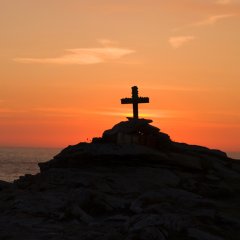World Ocean Radio - Religion and Cultural Beliefs

This week on World Ocean Radio Peter Neill shares thoughts and readings from Joseph Conrad and from UK writer Adrian Morgan's recent article entitled, “How Many Ways Has Joseph Conrad Described the Wind?"
This week marks the 750th episode of World Ocean Radio: 15 years of weekly short audio that reaches millions around the globe, sharing concepts, demands, and solutions related to ocean technology and science, policy, examples of best practice, personal reflections, and solutions for how the ocean connects, sustains, inspires, and engages us in common history, traditions, sustenance, communication, community, and well-being. Thank you for listening!
This week on World Ocean Radio, we are revisiting an episode focused on spiritual and religious belief around the world, and religious commitment to the environment-the ocean in particular-and to the protection of natural resources. He reads from various doctrinal statements by leaders of the major religions of the world, whose beliefs pertain to ocean and water.
How do we govern the ocean? This week on World Ocean Radio we introduce a concept that advocates for a centralized Ministry for the Ocean, a voice at the highest level of government to champion for ocean policy and protection.
This summer we are revisiting some of our favorite World Ocean Radio episodes that highlight optimism for the ocean. This week we outline the myriad ways that UNESCO World Heritage sites both on land and at sea are an essential part of a strategy to conserve and protect the ocean’s vast contributions to our scientific knowledge, and their importance for our cultural history, for protection, conservation, diversity, sustainability, survivability, and as treasured pieces of our cultural heritage, connecting us all for generations to come.
In this New Year’s episode of World Ocean Radio, host Peter Neill details a number of sacred places around the globe--on islands, along the shore, on the banks of rivers, lakes and streams--and the allies that these spaces have found in protective movements, enforcement, and international action. He outlines the relationship of biodiverse regions around the world to their sacred and scientific importance, and how conservation justifies protection while simultaneously meeting the goals of religionists and conservationists alike.

